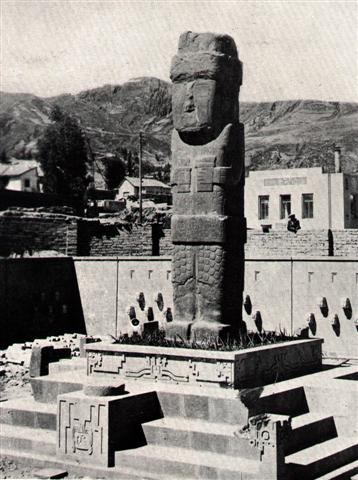74. According to Cartes du Ciel the
twinkling star at the Neck of Cetus, Mira (ο), should be
possible to observe in the evening of July 1
AD 2024:
We can see that the path of Mars is going above (the vertical
dimension is here projected upside down) the Head of Ku (Kuu),
with the Moon (blue) close by and with Jupiter (Yellow) close to
the Eye of the Bull (Ain, ε).
And M45
(the Pleiades) is between Mars and Jupiter but a little higher
up.
With a little adjustment we can put
the vertical dimension in its proper order, with Mira below and with
us standing upon
our feet:
From ο (110) Pisces to ο
(68) Ceti
(Mira) there were
*33 - *20 days.
68 + 310 = 378 ↔ Saturn ↔ Sun (300
↔ 378 - 78).
Possibly this view
hints
at an assumed
precessional change
with *45 because
currently the Sun
was rising at Rigel (*78)
and *78 - *33 = *45.
Furthermore, the
Pleiades group was named M45.
... In view of the
almost universal
prevalence of the
Pleiades year
throughout the
Polynesian area it
is surprising to
find that in the
South Island and
certain parts of the
North Island of New
Zealand and in the
neighboring Chatham
Islands, the year
began with the new
Moon after the early
morning rising, not
of the Pleiades, but
of the star Rigel in
Orion ...
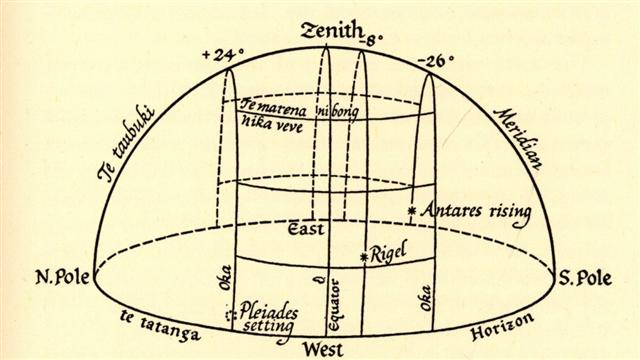
However, counting
from the Julian
spring equinox could
imply a distance of 41
(↔
Bharani, 41 Arietis) instead
of 45, and 49
(FEBRUARY 18) - 4 =
45.
... In 1638
Johannes
Holwarda
determined a
period of
the star's
reappearances,
eleven
months; he
is often
credited
with the
discovery of
Mira's
variability.
Johannes
Hevelius was
observing it
at the same
time and
named it
'Mira'
(meaning
'wonderful'
or
'astonishing,'
in Latin) in
1662's
Historiola
Mirae
Stellae,
for it acted
like no
other known
star. Ismail
Bouillaud
then
estimated
its period
at 333 days,
less than
one day off
the modern
value of 332
days, and
perfectly
forgivable,
as Mira is
known to
vary
slightly in
period, and
may even be
slowly
changing
over time
...
... Apart from
the unusual Eta
Carinae,
Mira is the
brightest
periodic
variable in the
sky that is not
visible to the
naked eye for
part of its
cycle. Its
distance is
uncertain;
pre-Hipparcos
estimates
centered around
220 light-years,
while Hipparcos'
data suggest a
distance of 418
light-years,
albeit with a
margin of error
of ~14%. This
Hipparcos surely
cannot refer to
the ancient
astronomer
Hipparkhos, and
by investigating
closer I find: 'Hipparcos
(an acronym for
'High
precision
parallax
collecting
satellite')
was a scientific
mission of the
European Space
Agency (ESA),
launched in 1989
and operated
between 1989 and
1993 ...
Bharani (*41.4
as counted from
the Gregorian
calendar)
suggests Gb4-14:
|
FEBR
17 |
18 (7
* 7 ↔ 78
- 29) |
19 (50) |
20
(*336) |
21 (417) |
 |
 |
 |
 |
 |
|
Gb4-13
(↔ 14 *
29½) |
Gb4-14
(↔ 336 +
78) |
Gb4-15 |
Gb4-16
(336 ↔ 4
* 84) |
Gb4-17
(108) |
|
PLACE OF
THE SUN: |
|
ξ¹ Ceti
(32.1) |
γ, δ
Trianguli
(33.0),
χ
Persei
(33.2),
10
Trianguli
(33.5),
θ
Arietis
(33.3),
MIRA
(Astonishing)
= ο Ceti
(33.7) |
No star
listed
(34) |
ξ
Arietis
(35.0),
ρ Ceti
(35.4),
12
Trianguli
(35.8),
ξ² Ceti
(35.9)
*360.0 =
*35.4 -
*41.4 |
σ Ceti
(36.9) |
|
April 22
(112) |
23 |
24
(*399) |
25 (480) |
26 (*36) |
|
°April
18 (108) |
19 |
20 |
21 |
22 (*32) |
|
'March
26 (85) |
27 |
28
(*372) |
29 (*8) |
30 (454) |
|
"March
12 |
13 |
3-14
(73) |
15 |
16
(*360) |
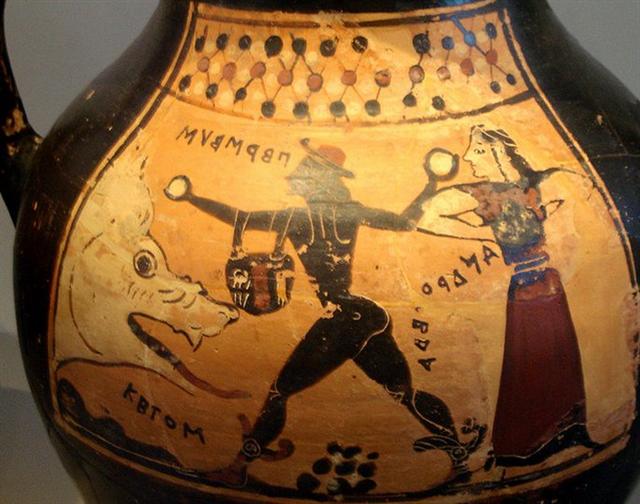 |
|
THE
NAKSHATRA
VIEW: |
|
AUG
18 (230) |
19 |
20
(*152) |
21 |
22 (234) |
|
Neck-2
(Dragon)
ASELLUS
TERTIUS
(3rd Ass
Colt) =
κ
Bootis,
κ
Virginis,
14
Bootis
(214.8) |
Al
Ghafr-13
(The
Cover)
/
Svāti-15
(Very
Good)
/
TAHUA-TAATA-METUA-TE-TUPU-MAVAE-6
(a
pillar
to stand
by)
15
Bootis
(215.2),
ARCTURUS
= α
Bootis
(215.4),
ASELLUS
SECUNDUS
(2nd Ass
Colt) =
ι
Bootis
(215.5),
SYRMA
(Train
of the
Virgin's
Robe) =
ι
Virginis,
λ
Bootis
(215.6),
η
Apodis
(215.8)
*174.0 =
*215.4 -
*41.4 |
ι Lupi,
18
Bootis
(216.3),
KHAMBALIA
(Crooked-Clawed)
= λ
Virginis
(216.4),
υ
Virginis
(216.5),
ψ
Centauri
(216.6),
ε Apodis
(216.8)
*175.0 =
*216.4 -
*41.4 |
ASELLUS
PRIMUS
(1st Ass
Colt) =
θ
Bootis
(217.8) |
τ
Lupi,
δ
Oct.
(218.1),
φ
Virginis
(218.7)
FOMALHAUT
(α
Piscis
Austrini) |
|
Oct
21
(*214) |
22 (295) |
23 |
24 |
25 |
|
°Oct
17
(*210) |
18 (291) |
19 |
20 |
21 |
|
'Sept
24 |
25 (268) |
26 |
27
(*190) |
28 |
|
"Sept
10 |
11 (254) |
12 |
13 |
14
(*177) |
 |
 |
 |
 |
 |
|
Ga6-10
(150) |
Ga6-11 |
Ga6-12 |
Ga6-13 |
Ga6-14
(154) |
We can compare with the C text where side a has to be turned
around to side b after Polaris.
|
FEBR 9 (40) |
10 (*326) |
11 (407) |
|
... On
February 9
the Chorti Ah
K'in,
'diviners',
begin the
agricultural
year. Both the
260-day cycle
and the solar
year are used in
setting dates
for religious
and agricultural
ceremonies,
especially when
those rituals
fall at the same
time in both
calendars. The
ceremony begins
when the
diviners go to a
sacred spring
where they
choose five
stones with the
proper shape and
color. These
stones will mark
the five
positions of the
sacred cosmogram
created by the
ritual. When the
stones are
brought back to
the ceremonial
house, two
diviners start
the ritual by
placing the
stones on a
table in a
careful pattern
that reproduces
the schematic of
the universe. At
the same time,
helpers under
the table
replace last
year's diagram
with the new
one. They
believe that by
placing the
cosmic diagram
under the base
of God at the
center of the
world they
demonstrate that
God dominates
the universe.
The priests
place the stones
in a very
particular
order. First the
stone that
corresponds to
the sun in the
eastern, sunrise
position of
summer solstice
is set down;
then the stone
corresponding to
the western,
sunset position
of the same
solstice. This
is followed by
stones
representing the
western, sunset
position of the
winter solstice,
then its
eastern, sunrise
position.
Together these
four stones form
a square. They
sit at the four
corners of the
square just as
we saw in the
Creation story
from the Classic
period and in
the Popol Vuh.
Finally, the
center stone is
placed to form
the ancient
five-point sign
modern
researchers
called the
quincunx ...
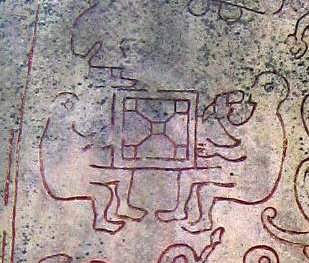 |
 |
 |
 |
|
Gb4-5 (325) |
Gb4-6 (97) |
Gb4-7 |
|
ALSEIPH
(Scimitar) = φ
Persei
(24.5),
τ
Ceti (24.7) |
No star listed
(25) |
ANA-NIA-10
(Pillar-to-fish
by)
χ
Ceti (26.1),
POLARIS =
α
Ursae Minoris,
BATEN KAITOS
(Belly of the
Fish) =
ζ
Ceti
(26.6),
METALLAH =
α
Trianguli
(26.9) |
|
4-14 (*24) |
April 15 (470) |
16 (106) |
|
°April 10
(100) |
11 (466) |
12 |
|
'March 18 |
19 (78) |
20 (*364) |
|
"March 4 |
5 (64) |
6 (*350) |
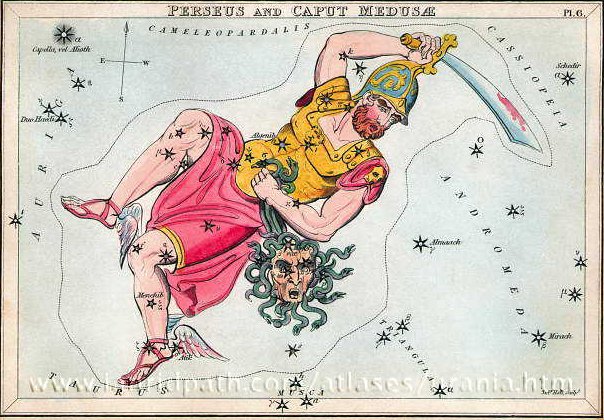 |
|
FEBR 12
(408) |
13 |
2-14 (45) |
15 |
16 (*332) |
 |
 |
 |
 |
 |
|
Gb4-8 (99) |
Gb4-9 (329) |
Gb4-10 |
Gb4-11 |
Gb4-12 |
|
Al
Sharatain-1
/
Ashvini-1
/
Bond-16
(Dog)
/
Mahrū-sha-rishu-ku-1
(Front of
the Head of
Ku)
SEGIN =
ε
Cassiopeia,
MESARTHIM =
γ
Arietis,
ψ
Phoenicis
(27.2),
SHERATAN
(Pair of
Signs) =
β Arietis,
Φ Phoenicis
(27.4)
*351.0 =
*27.4 -
*41.4 |
ι Arietis
(28.0),
λ Arietis
(28.2), υ
Ceti (28.8) |
ALRISHA (The
Knot) = α
Piscium,
χ Phoenicis
(29.2),
ε Trianguli
(29.4),
ALAMAK
(Caracal) =
γ Andromedae
(29.7)
*353.0 =
*29.4 -
*41.4 |
Arku-sha-rishu-ku-2
(Back of the
Head of Ku)
2h (*30.4 =
*354.0 +
*41.4)
κ
Arietis
(30.3),
HAMAL
(Sheep) = α
Arietis
(30.5)
ALKES (α
Crateris) |
DELTOTUM = β
Trianguli
(31.2), ι
Trianguli
(31.7), η
Arietis
(31.9) |

... Gamma
Andromedae
... is
the third
brightest
star in the
constellation
of
Andromeda.
It is also
known by the
traditional
name
Almach
(also spelt
as
Almaach,
Almaack,
Almak,
Almaak,
or
Alamak),
from the
Arabic
العناق
الأرض
al-‘anāq
al-’arđ
...
'the
caracal'
(desert
lynx).
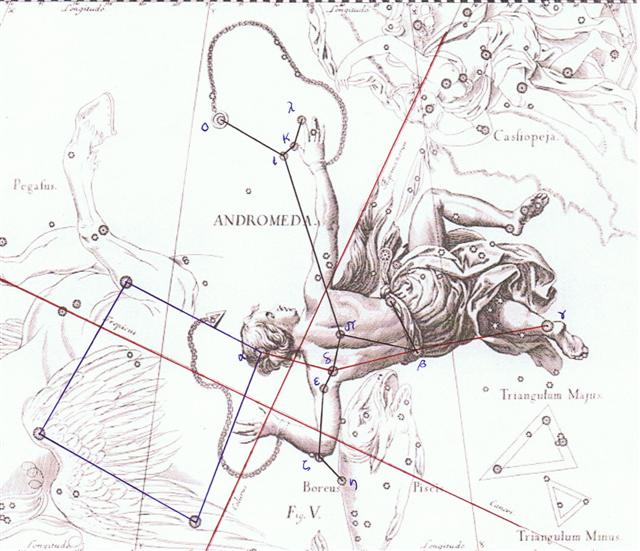
The foot of
Andromeda (γ,
Alamak, *29)
+ *49 = *78
(the foot of
Orion,
Rigel, β). |
|
April 17
(107) |
18 (473) |
19 (*29) |
20 (110) |
21 |
|
°April 13 |
14 (104) |
15 (*25) |
16 |
17 |
|
'March 21
(0h) |
22 |
23 |
24 (*368) |
Julian
equinox (84) |
|
"March 7
(66) |
8 |
9 |
10 (*354) |
11 (70) |

|


